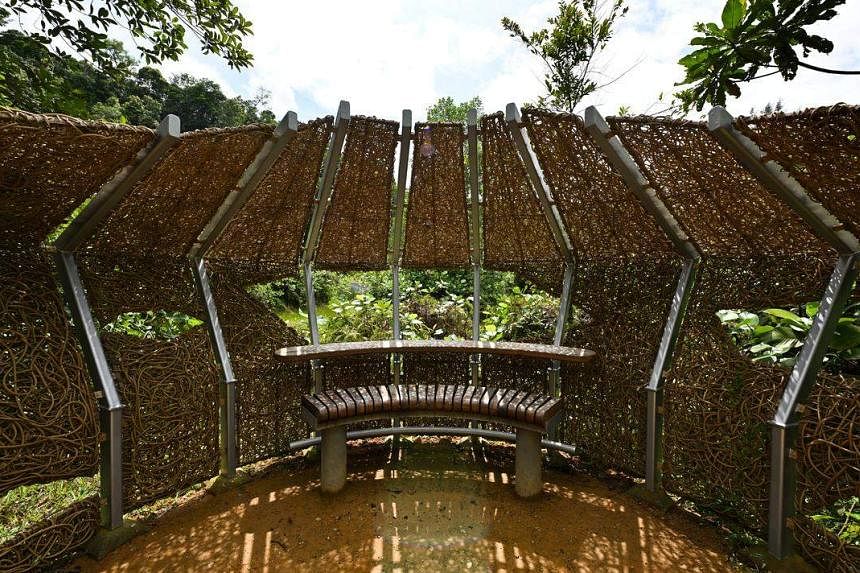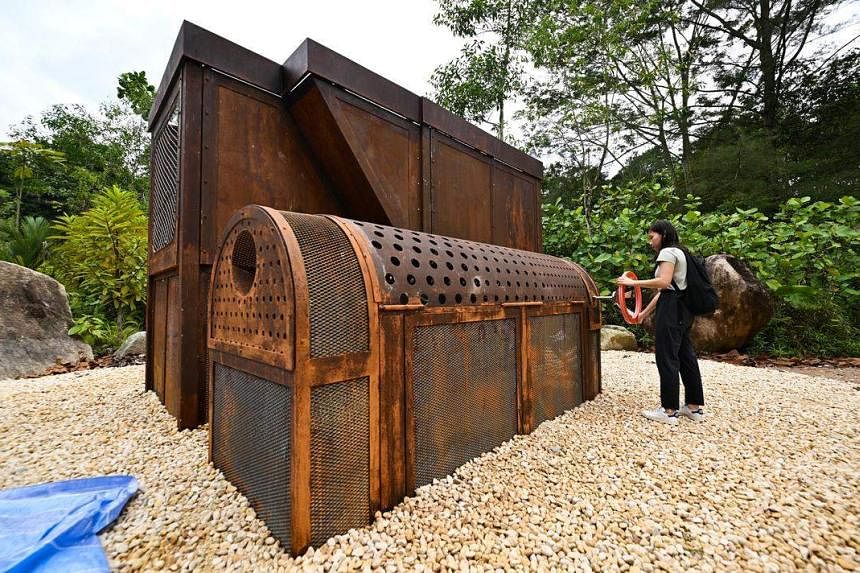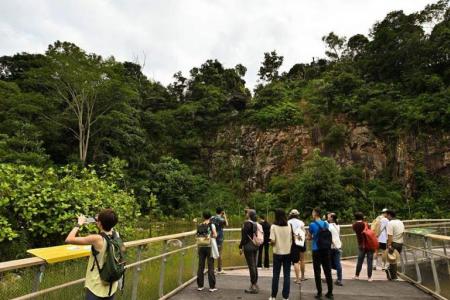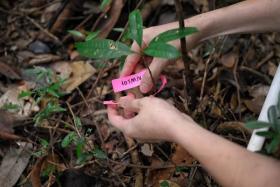Newly opened Rifle Range Nature Park offers 7km-long trails, rain garden and a clifftop view
Formerly a network of kampung trails skirting an abandoned quarry, the Rifle Range Nature Park has been opened by the National Parks Board (NParks) to make the forest and its paths more accessible to the public.
With its rocky foot trails, bridges over natural streams, and even a viewing point perched atop the cliff of a granite quarry, the new 66ha park is the eighth addition to the Central Nature Park Network, a ring of nature parks surrounding the Central Catchment and Bukit Timah nature reserves.
Accessed through an overhead bridge from Beauty World Centre in Upper Bukit Timah Road, the park – about the size of 123 football fields – has the greatest length of trails of all the nature parks in the network, with more than 7km of trails and boardwalks.
Besides having recreational qualities, the ring of parks in the Central Nature Park Network plays a crucial role as a buffer for the Bukit Timah and Central Catchment nature reserves, protecting them from the effects of development as well as negative climate effects, said Mr Lim Liang Jim, NParks’ group director of conservation.
The new Rifle Range Nature Park serves as a direct buffer to the Bukit Timah Nature Reserve, which is Singapore’s largest contiguous tract of forest untouched by human intervention.
This 163ha reserve contains at least 40 per cent of Singapore’s native flora and fauna, even though it makes up less than 1 per cent (0.2 per cent) of the country’s area.
It is home to animals such as the plantain squirrel, the greater racket-tailed drongo and the Singapore freshwater crab – a very rare species of crab that is found only in Singapore.
The park network also shields the nature reserves against edge effects, such as vegetation drying out along the margins of an area, said Mr Lim.
He added: “By protecting the large forested area within the reserves, you will be able to protect and provide a habitat for a great variety of species that can then reside within these habitats.”
Though Rifle Range Nature Park was originally a site cleared for the old Bukit Timah Kampung and the Sin Seng granite quarry, NParks said its proximity to the Bukit Timah Nature Reserve allowed the forest to regenerate.
After more than 30 years, Mr Lim said the forest had become verdant with life again, with more than 400 species of flora and more than 300 species of fauna recorded within its perimeter.
As a result, he said, the enhancement of the park had to be done sensitively and sustainably to ensure minimal disturbance to wildlife.


Before the park’s development between 2019 and 2022, NParks conducted a nine-month-long biodiversity baseline study to identify areas and species of conservation significance.
The results of this study factored in the design and planning of works, such as the construction of aerial bridges for tree-climbing creatures in the park and the types of native plant species to protect.

The community also had a hand in its enhancement, with members of the public invited to contribute through planting trees and removing invasive species.
One of those was the zanzibar yam (Dioscorea sansibarensis), or the purple yam plant, a herbaceous climber plant from Zanzibar that had grown aggressively and suffocated trees in the park.

Upon hearing the song of the critically endangered straw-headed bulbul at a media preview on Friday, Mr Lim said: “The animals are moving in, and it’s really special, even as you’re still preparing for the park’s opening.”
Adding that a kingfisher has already made its home in the wetlands restored from the quarry, Mr Lim said the park had been enhanced in a way that animals can accept.

Other than its natural elements, the park also has some educational opportunities for the public.
For instance, a replica of a rock-sorting machine has been set up to tell people how rocks from the quarry used to be sorted by size, alongside boards describing the history of Singapore quarries.

Sustainability was also incorporated as a key element in the park, with a visitor pavilion run completely on solar power.
A rain garden in the park purifies stormwater by passing it through an array of plants first before releasing it into a nearby stream.

The park was opened on Saturday by Deputy Prime Minister Lawrence Wong.
It will be open daily from 7am to 7pm.
Get The New Paper on your phone with the free TNP app. Download from the Apple App Store or Google Play Store now


